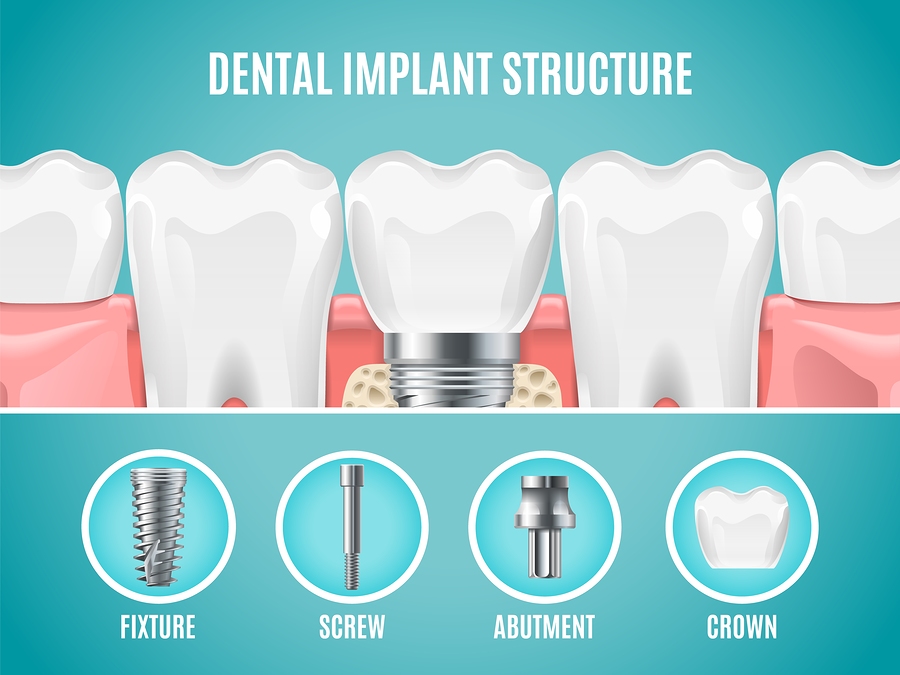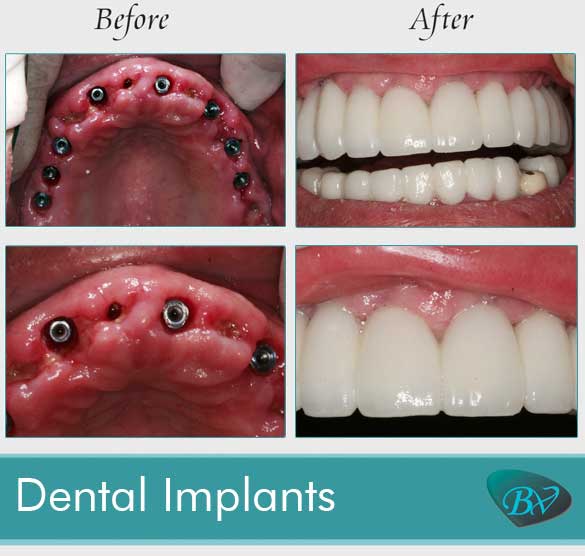Indicators on Dental Sense You Need To Know
Indicators on Dental Sense You Need To Know
Blog Article
Facts About Dental Sense Revealed
Table of ContentsNot known Facts About Dental SenseGet This Report on Dental SenseIndicators on Dental Sense You Should KnowUnknown Facts About Dental Sense
are clinical tools operatively implanted into the jaw to recover a person's ability to eat or their look. They provide assistance for synthetic (phony) teeth, such as crowns, bridges, or dentures. When a tooth is lost as a result of injury or disease, a person can experience issues such as fast bone loss, malfunctioning speech, or adjustments to eating patterns that lead to discomfort.Dental implant systems include a dental implant body and oral implant joint and may likewise consist of a joint fixation screw. Professional teeth whitening. The oral implant body is operatively placed in the jawbone in location of the tooth's origin. The oral implant abutment is usually affixed to the implant body by the abutment addiction screw and extends via periodontals into the mouth to sustain the affixed artificial teeth
(https://issuu.com/dentalsense1)Structure of The Oral Implant System choosing oral implants, talk with your oral company about the prospective advantages and risks, and whether you are a prospect for the treatment. Things to take into consideration: Your total health is an important consider figuring out whether you are a great prospect for dental implants, how long it will take to heal, and how much time the implant may stay in area.
Smoking may impact the recovery process and reduce the long-term success of the implant. The healing process for the implant body might take numerous months or longer, during which time you typically have a momentary joint instead of the tooth. the oral implant treatment: Very carefully adhere to the dental hygiene directions offered to you by your oral company.
The smart Trick of Dental Sense That Nobody is Discussing
Implant failing can result in the need for one more medical procedure to deal with or replace the dental implant system. Recovers the capability to chew Brings back cosmetic look Aids maintain the jawbone from diminishing as a result of bone loss Protects the health and wellness of the bordering bone and gums Aids maintain surrounding (neighboring) teeth steady Boosts high quality of life Damage to bordering all-natural teeth throughout dental implant positioning Injury to the surrounding cells during surgery, such as sinus opening Injury during surgical procedure (as an example, crack of surrounding jawbone) Insufficient function, such as seeming like the teeth do not attack with each other usually A sensation that the tooth is loosened or twisting in location resulting from an abutment screw loosening Implant body failing (looseness of the dental implant body) as a result of systemic infection, which might be more probable in people with uncontrolled diabetics issues because of local infection in bone and periodontals supporting the implant body because of delayed recovery, which may be more probable in individuals that smoke Trouble cleansing the gum tissues around the implant, resulting in inadequate dental hygiene Untreated periodontal disease Post-surgical pins and needles due to nerve impingement or damage Constantly inform health treatment carriers and imaging professionals that you have oral implants prior to any type of magnetic resonance imaging (MRI) or x-ray treatments.
FDA is not familiar with any type of unfavorable events reported for MRI or x-ray procedures with oral implants. Dental implants systems are commonly constructed from materials that adhere to global agreement criteria of the International Organization for Standardization (ISO) or ASTM International. These criteria have details of what makes a safe material.

An oral implant is a framework that review replaces a missing out on tooth. With screw-like devices, the surgeon inserts a dental implant right into the jawbone, and it functions as a support for an artificial tooth, called a crown. A device called a joint connects the man-made tooth to the oral implant. The crown is custom-made to fit the individual's mouth and match the color of their teeth.
Getting The Dental Sense To Work
Some individuals are not qualified for dental implant surgery. It is for dental surgeons to operate individuals with: acute illnessuncontrollable metabolic diseasebone or soft tissue disease or infectionIf these issues are resolved, a person can have the surgical treatment. In, oral specialists avoid operating on individuals with: If individuals with any one of the above undertake dental implant surgical treatment, there is a higher risk of the implant stopping working.

Dental implant surgery is a personalized process. It's not the same for everybody. The complying with provides a basic summary of what you can anticipate your dental expert, dental specialist, periodontist or prosthodontist to do: Position the dental implant surgically. Give you time to heal. Connect the post and final crown, bridge or denture.
Next off, your surgeon will meticulously put the oral implant right into your jaw. Lastly, your doctor will rearrange your periodontals and shut the incision with stitches. If your implant is near the front of your mouth, your dental practitioner will make a short-lived tooth for you to put on till you heal. In this way, you won't have a void in your smile while you recoup.
Dental Sense for Beginners
Your service provider can inform you what to expect in your scenario. During the healing stage, your jawbone needs to fuse to the dental implant. This procedure, called osseointegration, is vital for stability and long-lasting success. This procedure can take anywhere from three to nine months. In some cases, it may take longer.
As soon as your implant heals, your dentist can attach the joint (tiny port blog post) and your last repair (crown, bridge or denture). This generally takes concerning one hour to complete and may need a 2nd small surgery. You shouldn't feel any kind of discomfort throughout your oral implant treatment because your service provider will certainly utilize medication to numb your gums.
Report this page